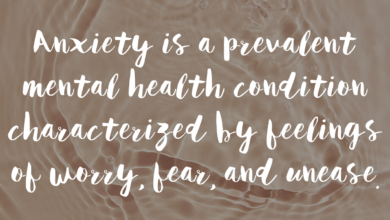Unmasking as a Late-Diagnosed Autistic Person
As someone who wasn’t diagnosed with autism until her mid-40s, I often struggle with what it means for me to unmask. What if people don’t like who I am without masking? How even am I masking? These are just a few of the questions that someone who is a late-diagnosed autistic person must battle with when determining whether or not to unmask.
What is masking?
Masking is when an autistic person alters or camouflages their behavior to better fit in with allistic (non-autistic) behavior expectations. Many autistic people do this because it allows them to feel safer in a world where there is still significant stigma surrounding autism and autistic behaviors. Masking is also one of the primary reasons that many girls – who often mask at higher rates than boys – go undiagnosed for so long, if they are ever diagnosed at all.
Masking is when an autistic person alters or camouflages their behavior to better fit in with allistic behavior expectations.
Masking looks different for every autistic person, depending on what particular autistic traits they have. Some masking behaviors can include, but are not limited to:
- Avoiding stimming or the need to move
- Using facial expressions or making eye contact
- Wearing clothes that are uncomfortable to appear “professional”
- Engaging in social etiquette behaviors that don’t make sense to them because it makes others more comfortable (for example, small talk, which can be extremely tiring for autistic people)
- Rewriting (and rewriting again) emails to make them sound less blunt and more friendly
- Avoiding the urge to talk extensively about their special interests
For many years, parents and caregivers of autistic people have encouraged training and therapies like Applied Behavioral Analysis (ABA) that teach how to curb autistic behaviors and fit in better with allistic expectations. However, in more recent years, there has (very fortunately) been a strong movement in the autism community to recognize that autism isn’t something to be “cured” or “treated,” but that we should find ways to better support autistic people in a world built for allism.
Is it easy to mask?
There’s really no way to measure the energy required for an individual autistic person to mask. How easy it is to mask depends on a variety of factors, including what behaviors someone is trying to mask, how often they feel the need or are required to mask, and what level of masking they feel the need to use, among other things. Often, masking requires an extensive amount of energy for autistic individuals, and often leads to stress, fatigue, and other physical ailments.
So why mask if it’s so exhausting? There is still quite a bit of stigma attached to autism and the behaviors that are associated with it. It can make someone very uncomfortable to unmask with people who have either expressed negative bias towards autistic people or haven’t made it clear how they feel about autism. And for many of us who have been masking since we were children, it can be difficult to know how not to mask if we are not diagnosed until much later in life.
Many BIPOC individuals, women, non-binary, and queer people – who are often already coding their behavior based on their race, gender, or sexuality to stay safe – choose to mask when they feel unsafe in school, the workplace, or other situations.
It’s also extremely important to note that many people feel the need to mask for safety. Many BIPOC individuals, women, non-binary, and queer people – who are often already coding their behavior based on their race, gender, or sexuality to stay safe – choose to mask when they feel unsafe in school, the workplace, or other situations. This can cause additional fatigue and exhaustion on top of dealing with racism, sexism, and homophobia in these situations.
Unmasking
As the world continues to grow in its acceptance and even sometimes celebration of neurodiversity, hopefully more autistic people can unmask in any situation. Some autistic advocates have also argued that the only way to live fully as an autistic person is to unmask. For those of us who have been diagnosed late, there can be some extra challenges to unmasking, however.
As we work to unmask, it can mean lots of uncomfortable conversations with the people around us. It can be just as exhausting to constantly be the educator in these situations as it can be to mask.
For many of us, we have established work situations and relationships based on who we have been as a masked autistic person. As we work to unmask, it can mean lots of uncomfortable conversations with the people around us. It can be just as exhausting to constantly be the educator in these situations as it can be to mask.
It can also be challenging to know what is masking and what isn’t when we’ve been living most of our lives undiagnosed. For some of us, masking is second nature at this point, and unraveling what we are really feeling at any given time can be difficult. We may be using adaptive behaviors and masking and not even realize it!
And of course, it’s important to remember that unmasking just may not be a safe possibility for some autistic individuals and/or in some environments.
Ultimately, the choice to mask or unmask as an autistic person is very personal and can depend on many things. But there’s no doubt that masking during our daily lives can cause significant strain on our mental and physical energy, which means we may struggle more in other areas of our lives. If you’re looking to learn more about autistic masking and unmasking, the book “Unmasking Autism” by Devon Price has some excellent information and exercises to help you better understand what this might look like for you.
Source link
#Unmasking #LateDiagnosed #Autistic #Person

